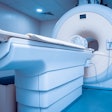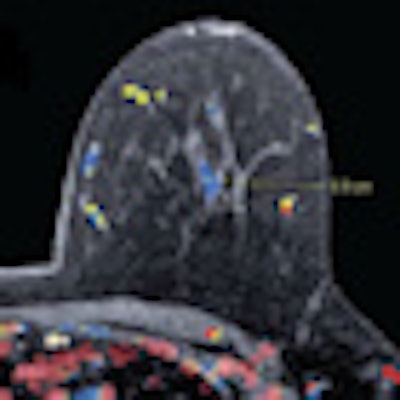
Despite American Cancer Society guidelines recommending that women at high risk for breast cancer undergo MRI screening in addition to regular mammography, only 14% of these women are getting the scans, according to researchers from the University of Colorado.
John Brinton, of the University of Colorado, Denver, and colleagues at Invision Sally Jobe Breast Centers, also in Denver, investigated how many women who were at risk for breast cancer and were recommended for MRI screening exams actually received them. Brinton presented their results at the RSNA 2010 meeting in Chicago.
"We wanted to ascertain what percentage of women would be found to be at elevated risk and how many of those women would have an MRI if it were recommended," he said. "We also wanted to determine the average length of time between a recommendation for MRI and the completion of it."
Brinton's team used the Gail model to assess breast cancer risk for 64,659 women ages 35 or older who presented for routine screening at Invision Sally Jobe Breast Centers between January 2008 and January 2009. All women with at least a 20% lifetime risk were referred to screening MRI; they were tracked for a minimum of two months after the recommendation to determine if they received a scan. The follow-up period ended in March 2009.
The Gail model identified 1.9% of the cohort, or 1,228 women, as having a 20% lifetime risk of breast cancer. This figure is noticeably higher than that found in a study conducted at the Massachusetts General Hospital (MGH) Avon Foundation Comprehensive Breast Evaluation Center in Boston, which used the BRCAPRO risk assessment model in a study of 18,190 women and found 0.43% to be at high risk.
Of the women identified by the Gail model to be at high risk, 15.4% had an MRI within a year, Brinton said. Although women younger than 40 were three times as likely to receive an MRI recommendation as women older than 40, there was no significant difference in the completion rate between these two populations, the study found.
Fifty-seven percent of the women who were recommended to MRI and got the exam did so within two months; 72% completed it within the first six months after the recommendation.
The study had limitations, according to Brinton: It was conducted at one clinic, and the results may not be able to be generalized. Also, the Gail model is not recommended by the American Cancer Society (ACS) because it has been criticized as limited in the way it incorporates family history information and, therefore, may underestimate risk for many women. Finally, the study did not account for loss of patients to follow-up.
But the question of whether clinicians would be finding more cancers in at-risk women if the women were getting MRI screening remains, Brinton said. He showed meeting attendees an example of a cancer that had been missed by digital mammography and found by MRI.
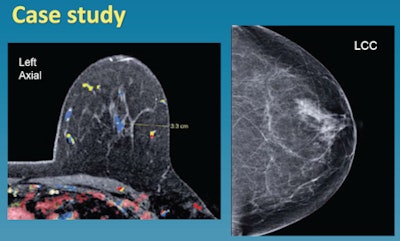 |
| Image courtesy of John Brinton. |
The image was a left-axial MRI of a woman who had a high lifetime risk of breast cancer. Postcontrast enhancement showed a nonmasslike area, whereas the full-field digital mammogram showed no suspicious evidence of the cancer, Brinton said.
"Of course, this is just one study, but it does raise the question of how many cancers are being missed because of underuse of MRI as a screening tool," he added.
And if MRI screening according to ACS guidelines is rare, then there's a need to reduce the barriers to its use, Brinton concluded.
"The low screening yield [for MRI] demonstrates a need for the reduction of structural, economic, and behavioral barriers," he said. "And we can't evaluate the effect of the guidelines on [healthcare] cost, cancer detection, and biopsy until more women are screened as recommended."
By Kate Madden Yee
AuntMinnie.com staff writer
January 13, 2011
Related Reading
Menstrual cycle affects mammo screening accuracy, December 7, 2010
Annual mammograms reduce mastectomy risk in younger women, December 6, 2010
Mammograms catch few cancers in young women: study, May 4, 2010
HHS states support for younger mammo screening, November 19, 2009
Benefits of mammographic screening in young women still unclear, December 8, 2006
Copyright © 2011 AuntMinnie.com


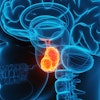
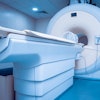
.fFmgij6Hin.png?auto=compress%2Cformat&fit=crop&h=100&q=70&w=100)
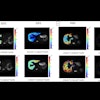


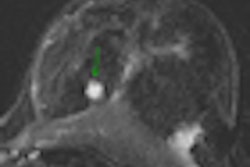
.fFmgij6Hin.png?auto=compress%2Cformat&fit=crop&h=167&q=70&w=250)

